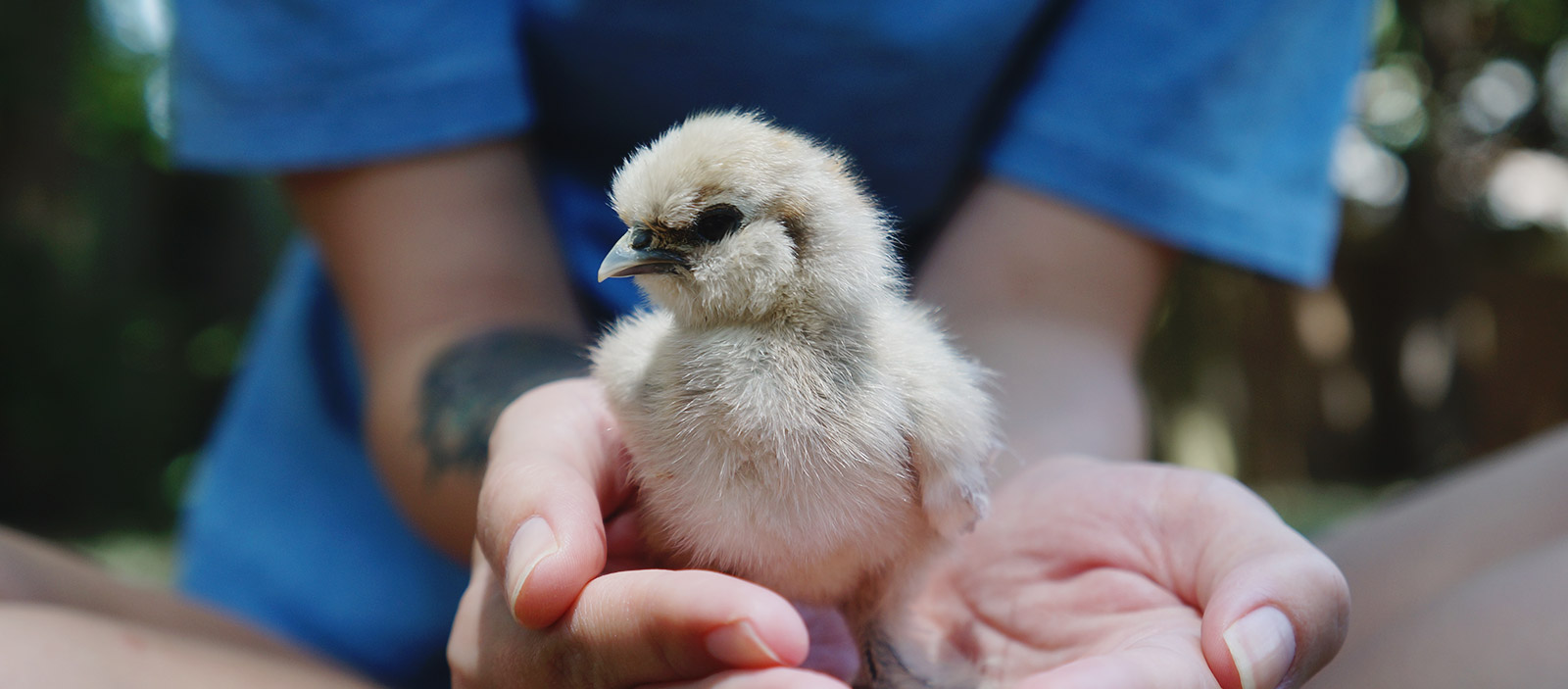It’s springtime, which means it’s chick season! I’ve been so tempted by all the chicks showing up in the feed stores, but with baby on the way, I’m done growing my flock of ladies for awhile. Even though I can’t get any chicks myself, I thought it might be worthwhile to write about them a bit more on the blog (it is named Henhouse after all…).
I was featured in an article about raising backyard chickens a couple years back, but I still get lots of questions so I thought it would be great to do something a little more in-depth about raising chickens on your own. Chickens are some of the best pets in my book. I find them somewhat therapeutic, keep me in a routine, and of course the greatest bonus: free eggs! Here’s my beginner’s guide to raising chickens in your backyard:
Make sure you can have chickens where you live
First things first: you’ve got to make sure you can actually keep chickens in your backyard! You don’t want to make the investment of setting everything up only to find out you can’t have them and an angry neighbor calls animal control on you. Before starting your hunt for chickens, you’ll want to check on your HOA, city, and county rules.
We are lucky enough to not have an HOA, but Charlotte does have it’s own set of rules regarding chickens. We are required to get a permit for our chickens, keep the coop 50 feet from any other property line, and not keep roosters.
Selecting a breed
There are hundreds of types of chickens, and just like dogs each one brings something different to the table. When selecting your breed, there are a few factors you need to consider:
- How much you want to spend
- What’s the environment like that you’re keeping them in (i.e. city backyard, large yard with hiding places)
- How many eggs you’d like to get
- How much attention you’d like to devout to your flock.
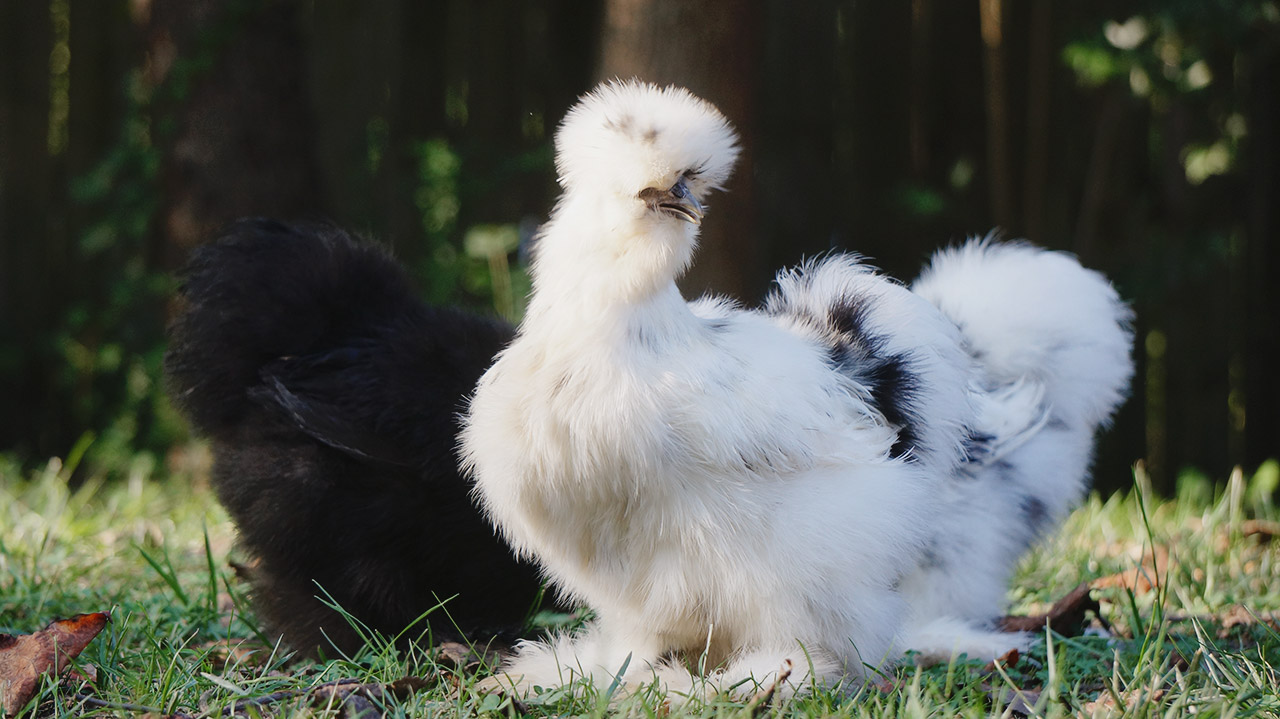
As you might know, I own Silkie chickens - which are covered in fluffy feathers that make them look more like miniature poodles or a muppet rather than a chicken. This breed comes with its own set of pros and cons:
Pros:
- Very friendly breed that is great at being handled, making them great for kids and guests that come over wanting to hold or pet your chickens
- They are much smaller than your standard chicken, meaning they can’t fly/jump very high. This makes them perfect for backyard living as they can’t escape over the fence.
- This breed loves to be mamas and are great at taking care of their young - even if they aren’t their own.
Cons:
- They aren’t great layers, so I don’t get eggs from them every day.
- This isn’t the smartest breed, making them more susceptible to predators. When a hawk flys over our yard, our chickens often just squat down in the middle of the yard, making them sitting ducks. This means they need constant supervision while out.
- Because of their feathers, this breed is more affected by cold, wet weather - meaning they can get sick easier. Their feathers also make them more susceptible to things like mites - something I’m dealing with now, the worst!
- It’s very difficult to sex this breed as chicks, so we always end up with a few roosters in the bunch that we have to get rid of.
Starting your flock
When getting your first set of chickens, you’ve got a few options: get prehatched chicks, hatch your own eggs in an incubator or with a hen, or get a few fully hens.
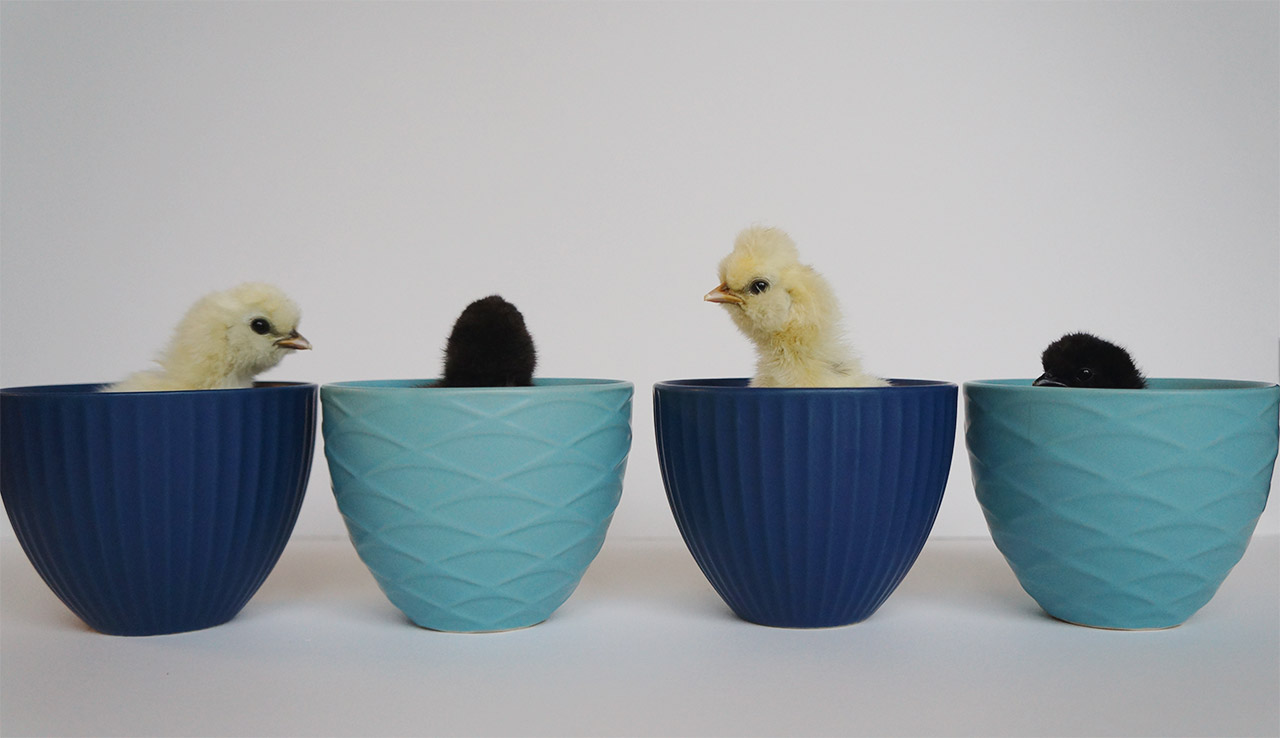
Getting chicks is definitely the most popular option, as they are easy to get from local feed stores or folks on local chicken facebook groups or craigslist. This is how I started my own flock! When getting new chicks there are a few things to keep in mind that most folks don’t know:
- You can’t get just one. Chicks need to be kept warm, and they get lonely so it’s best to have more than one. Plus with new chicks, it’s very likely they could die early on or get picked up by a predator, so it’s best to start out with more than less. I recommend at least 3-4.
- Chicks are used to staying under their mom for the first few weeks where it is HOT, so they must be kept warm. This means that without a hen to raise them, they need to be kept under a heat lamp for at least 6 weeks (when they become fully feathered).
- Because of the need for the heat lamp, they can’t go in a coop just yet and likely need to be kept inside, or in a garage or barn. I usually keep mine in a large plastic bin in our downstairs bathroom. My husband hates this, but it lets me keep a good eye on them and the heat lamp.
- The chicks immune systems aren’t built up just yet either, so it’s important to keep them away from other chickens, and even from running around outside. I usually wait a few weeks before taking them out for some lawn time.
You can also hatch your own eggs in an incubator or with a hen. My family has never had much luck with the incubator, but I did hatch my last batch of eggs with my hens! Out of 9 eggs I had 5 hatch, so not bad odds. This was so much easier than getting newly hatched chicks as I didn’t have to keep them in the house and they could grow alongside my flock. The only downside is that it took a lot longer for these chicks to warm up to me since they weren’t being handled as often as the ones I’d raised indoors.
Setting up your coop
A good coop set up is key to having a successful flock. No matter where you live, predators are sure to try and make their way into your coop after your chickens. It’s also important to have a structure that provides good protection from whatever climate you’re in. Chickens don’t do well in extreme heat, so it’s important to have good ventilation. They also don’t do well when wet (especially if it’s cold out), so it’s important to make sure they’ve got plenty of coverage from rain.
For folks just starting out, I generally suggest getting one of the smaller coops from Tractor Supply or a big box store. These are often very secure, and don’t end up costing much more than it would to build your own. When I got my initial three chickens, I picked up the coop below for $300 from Sam’s club and set it atop a concrete slab so it was secure from any other animals that might try to dig in. The only downside to these coops is they don’t hold many chickens - my first three were always eager to get out!
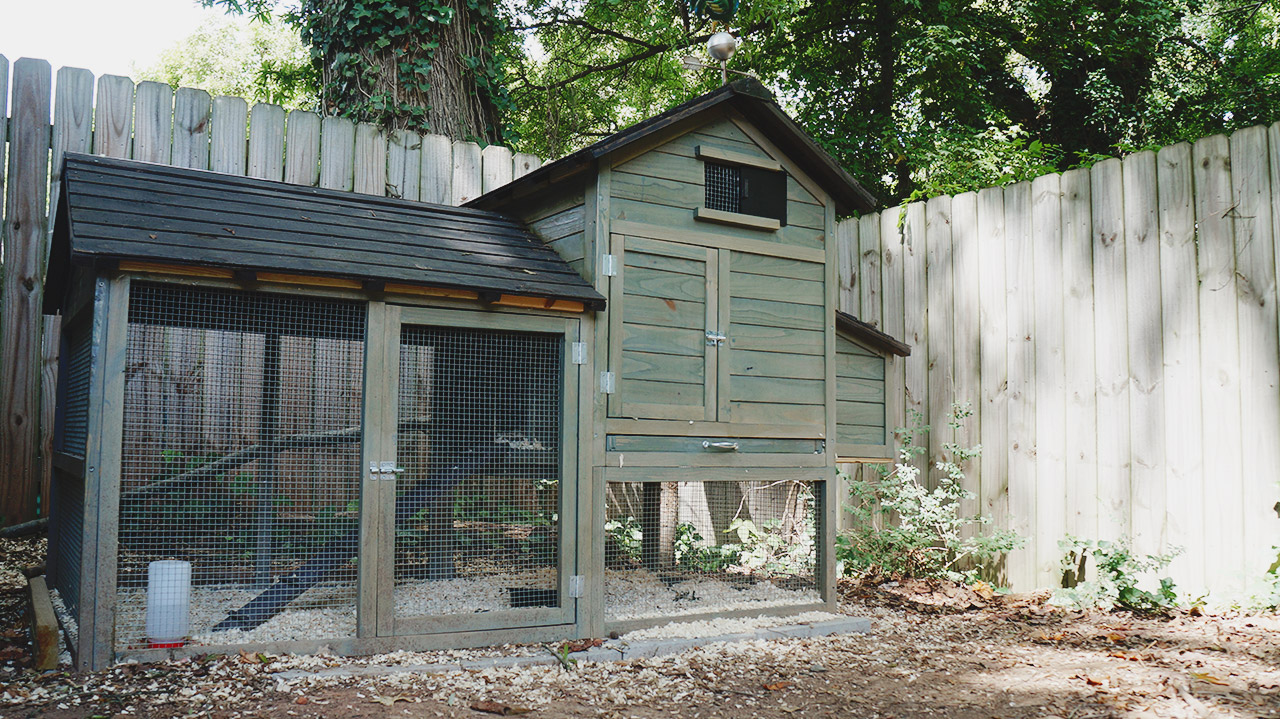
Once you’ve lived with a smaller coop for awhile - go wild in building and customizing your own coop! I soon realized we had a major hawk problem in my neighborhood - so the chickens cannot free range without me being nearby. I ended up building a large enclosure around their small coop for them to spend the day in when I can’t be outside to free range with them. The enclosure is ~12x12ft with aluminum roofing to keep them dry in rainy weather. I also knew to build it tall enough for me to walk under after dealing with crouching just a few months with the smaller coop!
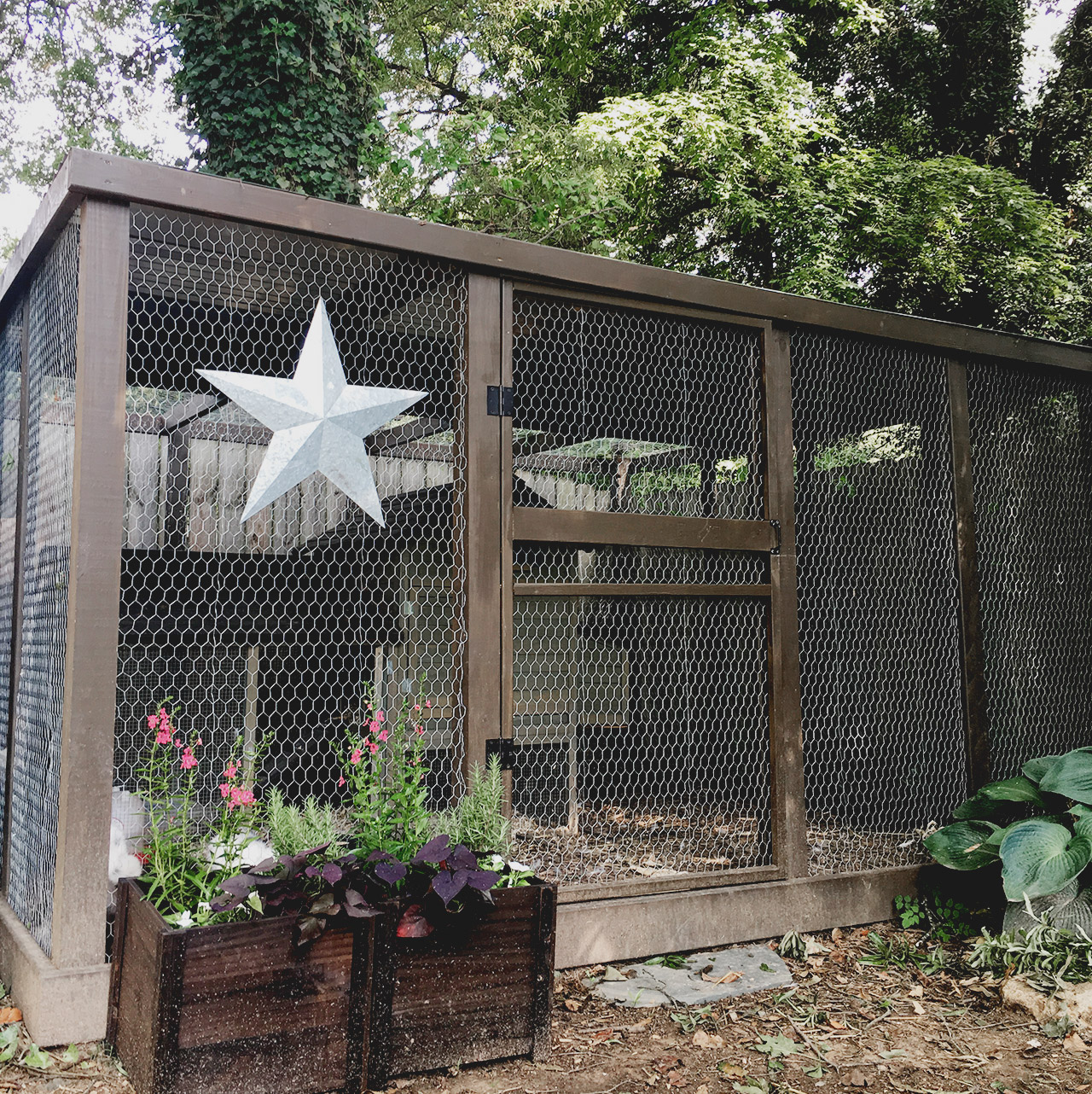
The coop is definitely always a continuous project. I’ve been fighting to keep a rat out for the last year, so I’m constantly adding on more wire and burying concrete blocks around the edge. I also make sure to double lock up the chickens every night - so they are locked in the large enclosure and in their smaller coop while they sleep. It’s like Fort Knox in there, but it’s worth it to keep them safe! 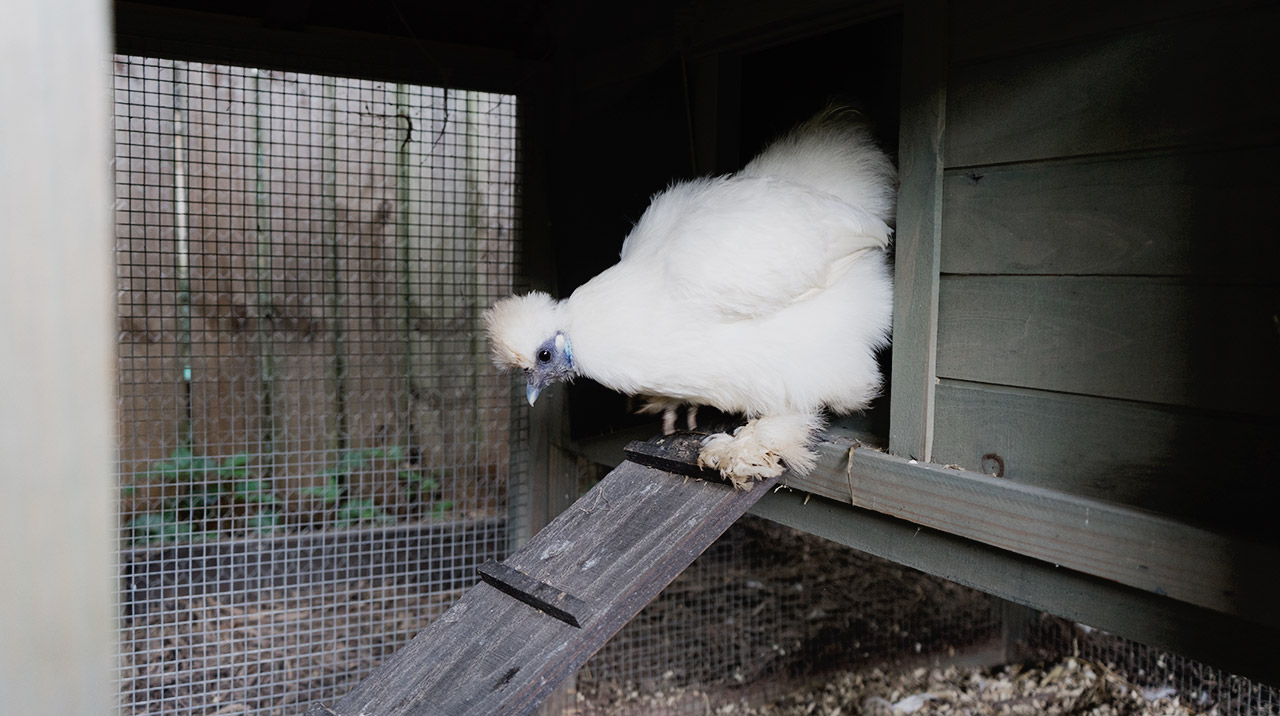
Food and care
Feeding the chickens is super easy. Each morning I just throw in a few cups of food for them, and I make sure they’ve got clean water (we have a 5 gallon galvanized steel waterer in our coop that I don’t have to refill very often).
I pick up a bag of food from our local pet supply shop that is a layer feed with some scratch (dried corn or other oats and vegetables) mixed in. It’s also important to make sure your chickens get a lot of calcium as they’ll need it to produce those eggs! You can supplement the calcium by giving them crushed oyster or egg shells.

I generally also try to give some treats to my chickens a few times a week - especially in the winter when they get bored. The chickens are great at clearing out the produce in our fridge that’s just passed it’s fresh point - and they love spinach and mixed lettuces, berries, and melon.
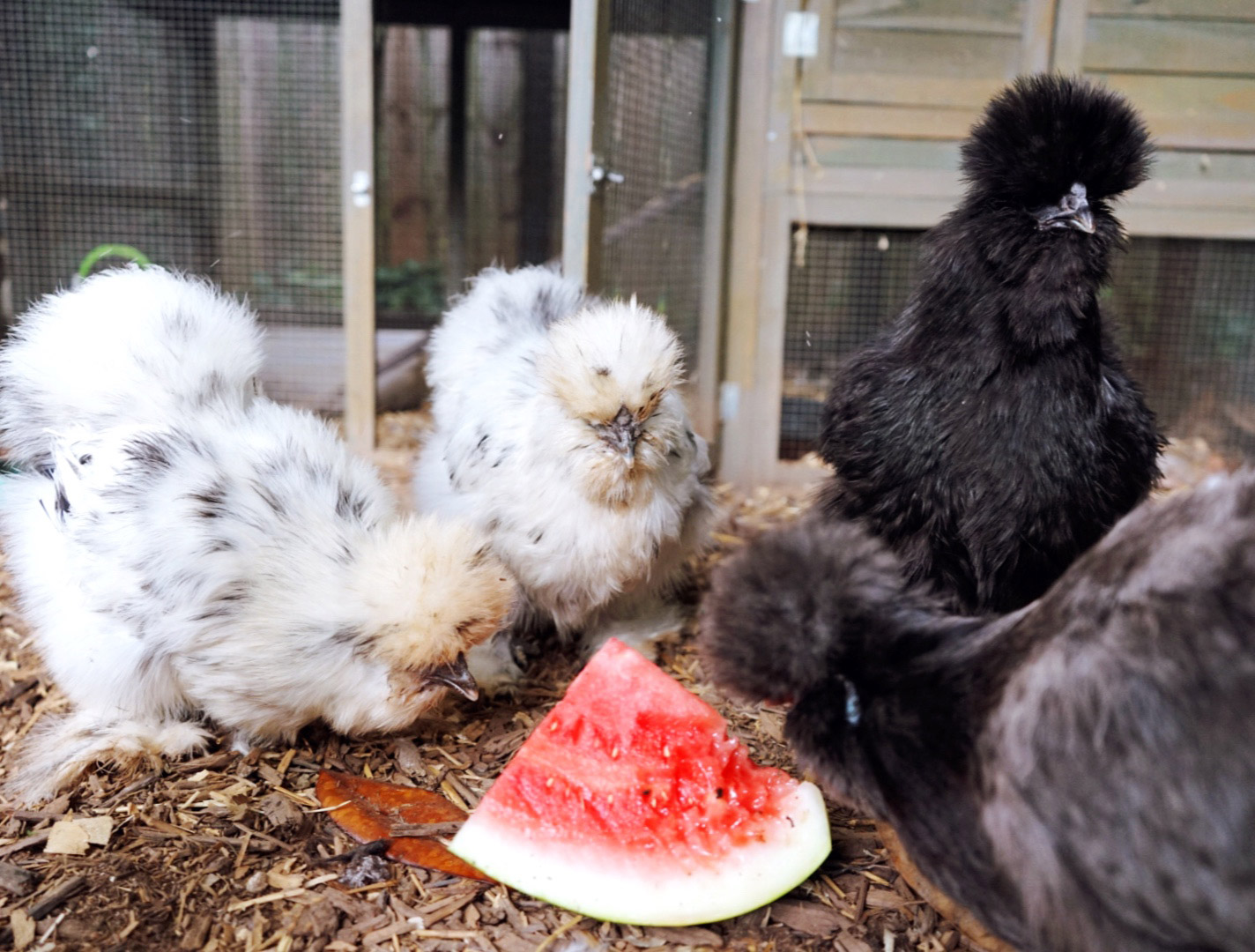
The ladies also love their protein, so I’ll occasionally pick up some dried mealworms for them (which go QUICK), or make them some eggs. Yep - eggs! I usually scramble them some when we get a surplus of eggs in the house.
But do they stink?
This is one of the most common questions I get about my chickens, and the answer is no. Like anything, you of course have to keep their coop clean, but as long as it’s kept up there is no smell.
I keep fresh pine shavings in their smaller coop, along with hay in their roost and I clean this out every few weeks. In their larger enclosure I keep mulch or mini pine nuggets. They don’t love walking on this and prefer it be dusty so they can bathe, so I don’t change this out very often.
Eggs
Finally, what everyone has been wondering about - the eggs! I do get eggs from my chickens, and they are some of the tastiest perks ever.
The amount and size of eggs you get from your chickens really depends on the breed. You don’t need a rooster around for the hens to lay - they will lay about one egg per day.
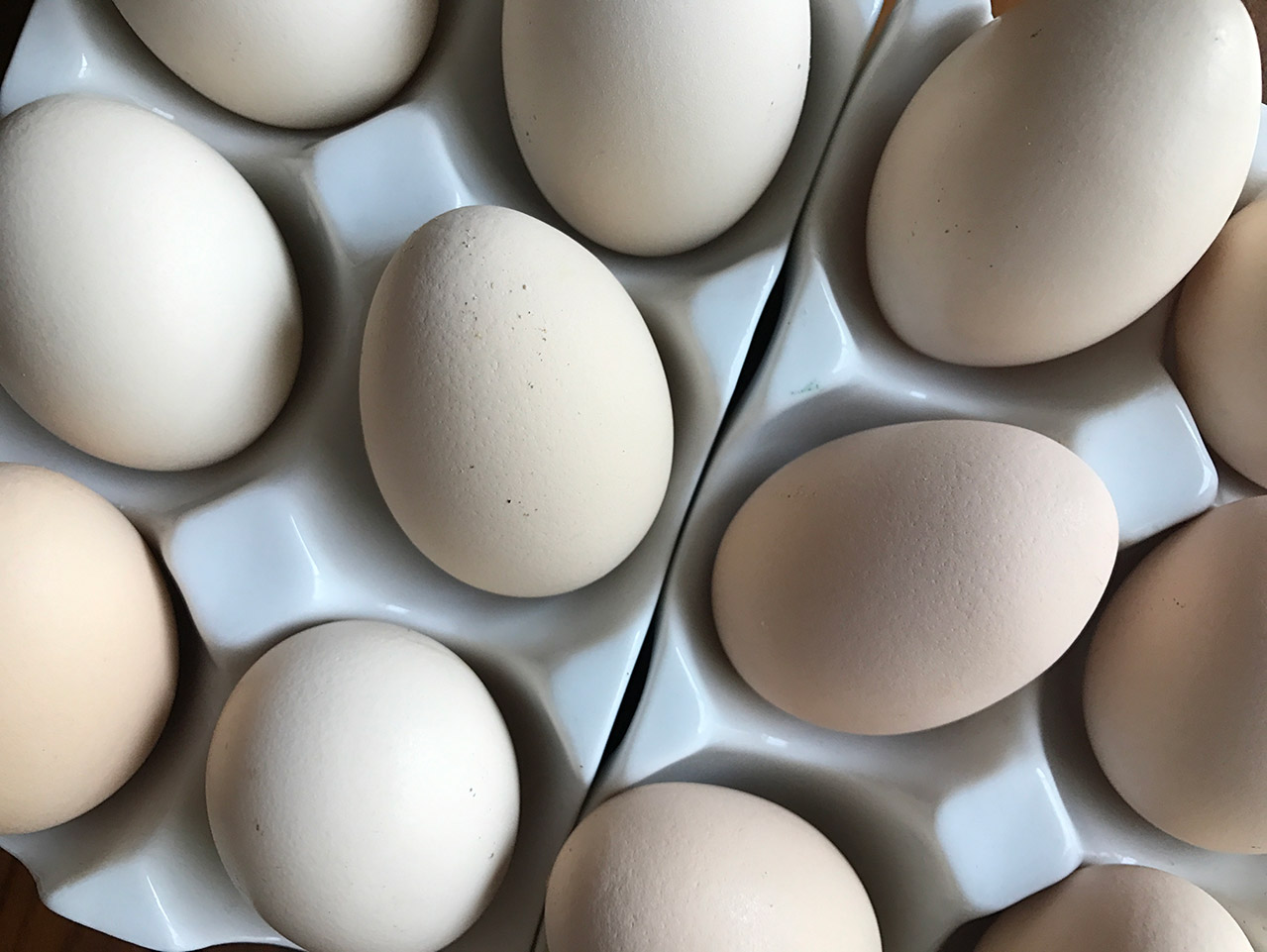
My one piece of advice is don’t go into this thinking your going to have some sort of booming egg business selling to everyone in the neighborhood. For one, your chicks won’t start laying until they are fully mature - around 6 months of age. If they mature in the winter, you can expect to wait all the way until spring as the lack of sunlight in the winter decreases their production.
It’s also important to keep in mind that the eggs aren’t the pristine white you see in the grocery store. They’ll likely be a little dirty, discolored, and sometimes misshapen! I generally toss the really gross looking eggs right in the compost, and if the eggs are just a bit dirty dry brush them off with a rag. It’s just important not to wash the eggs under water or your release a bacteria from the shell.
The eggs can sit out on the counter or get refrigerated. If left out, they last about a month, and they can last up to three months in the fridge.
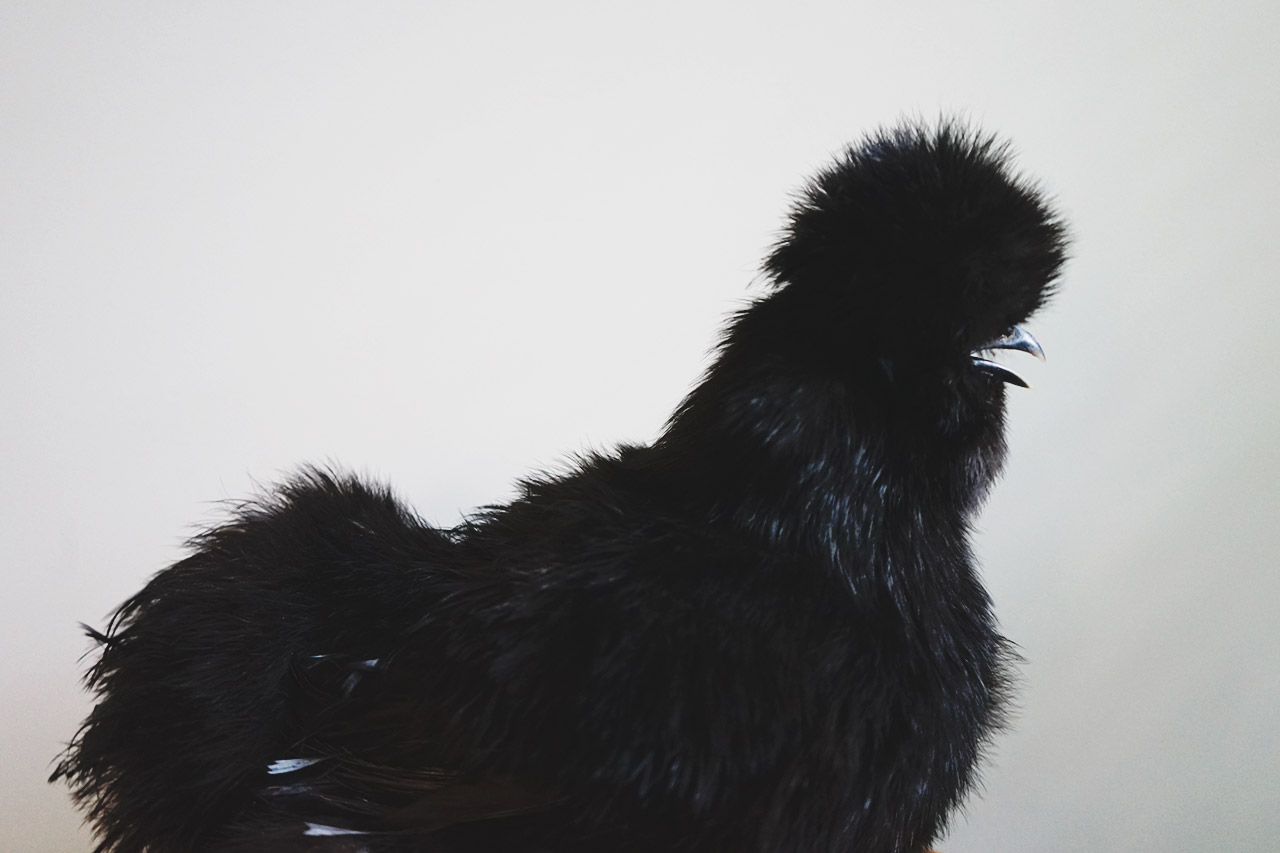
That’s my intro to raising chickens in your backyard! Not too bad heh? If you’ve got more questions about raising your own feathered ladies, please leave them in the comments below. I may even write up a few more posts on how to raise these girls!
